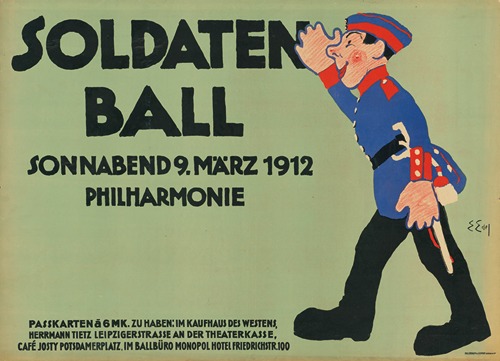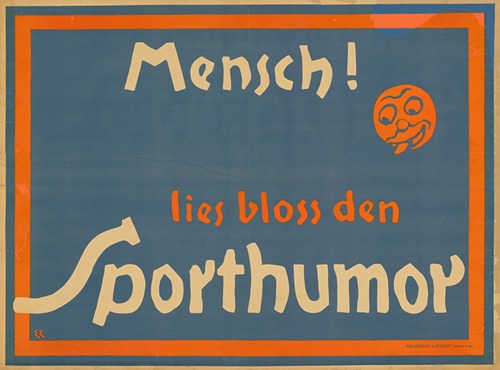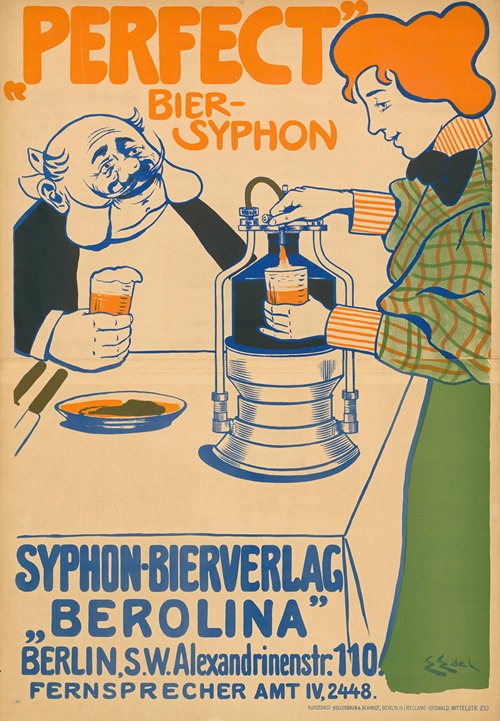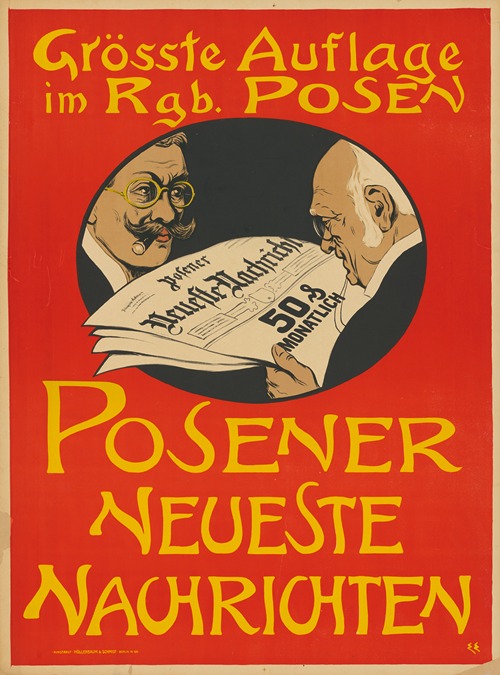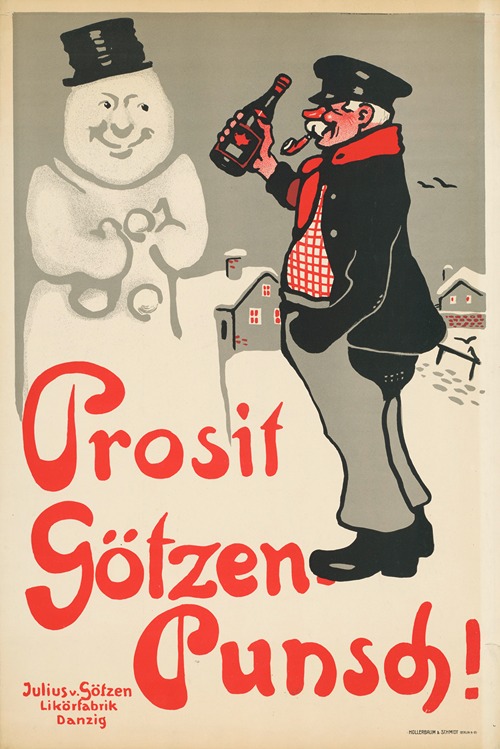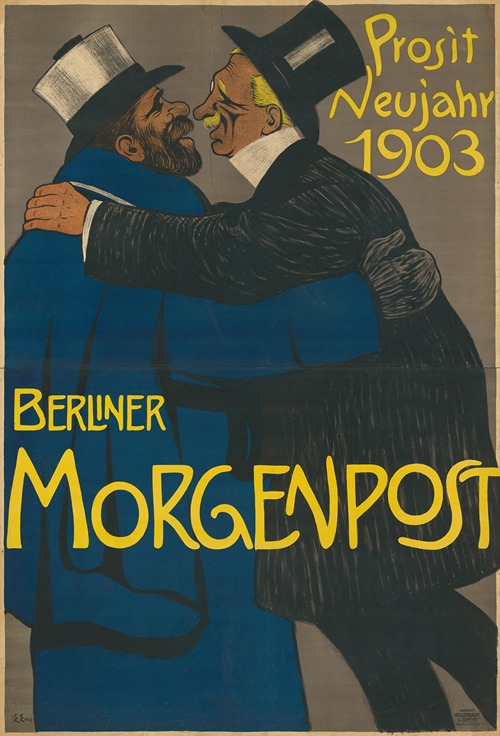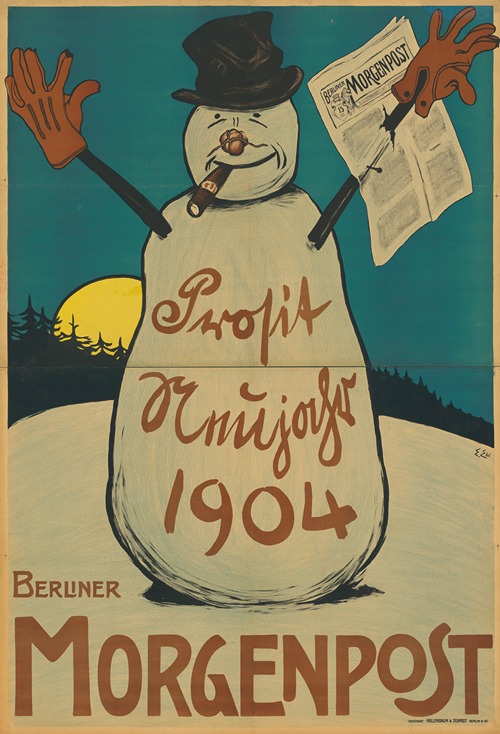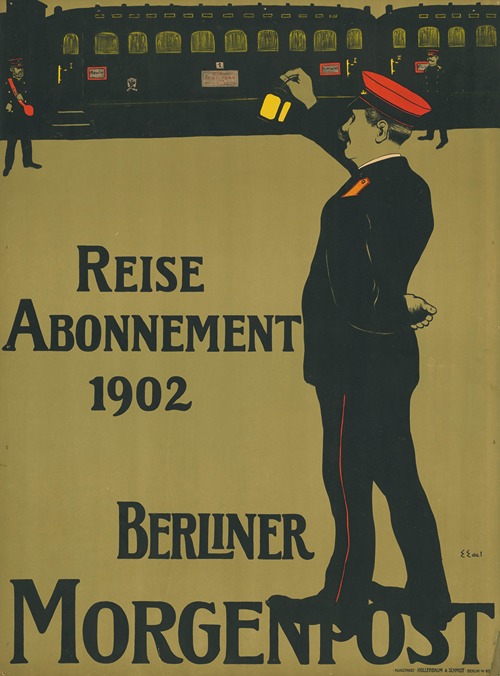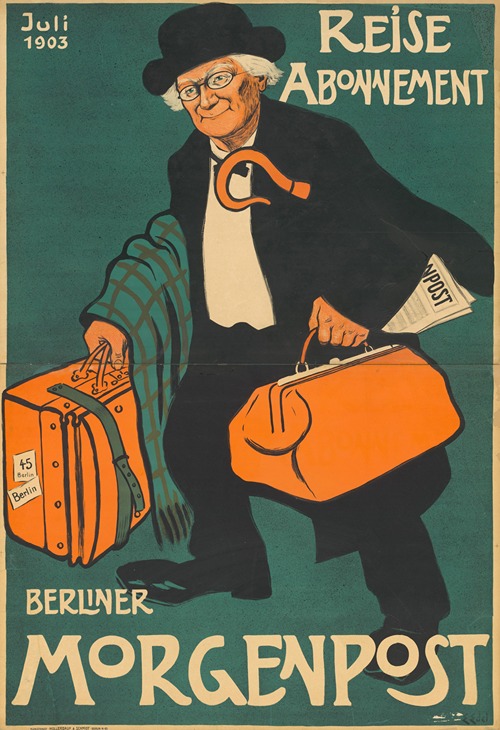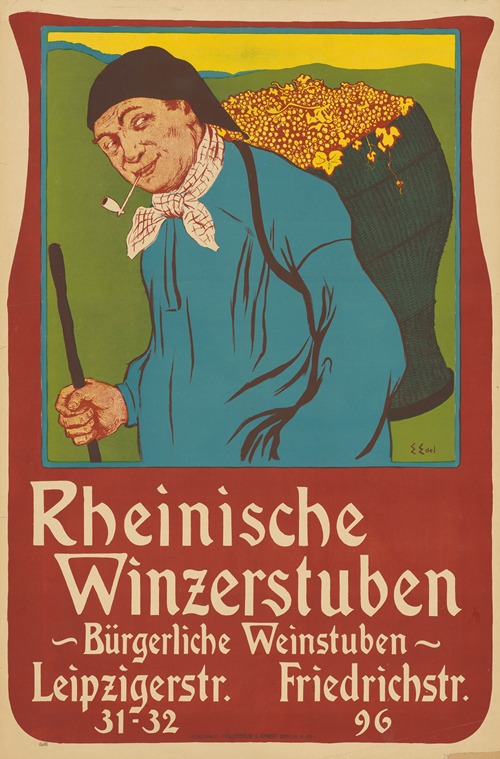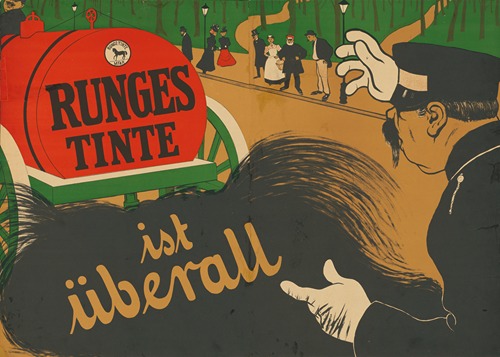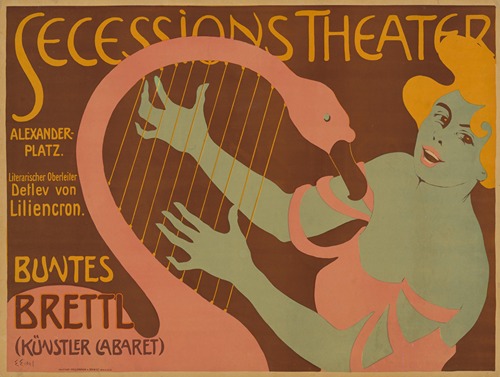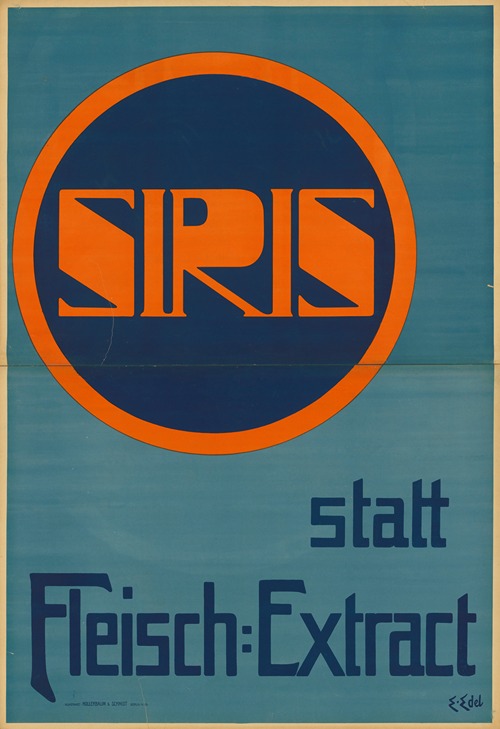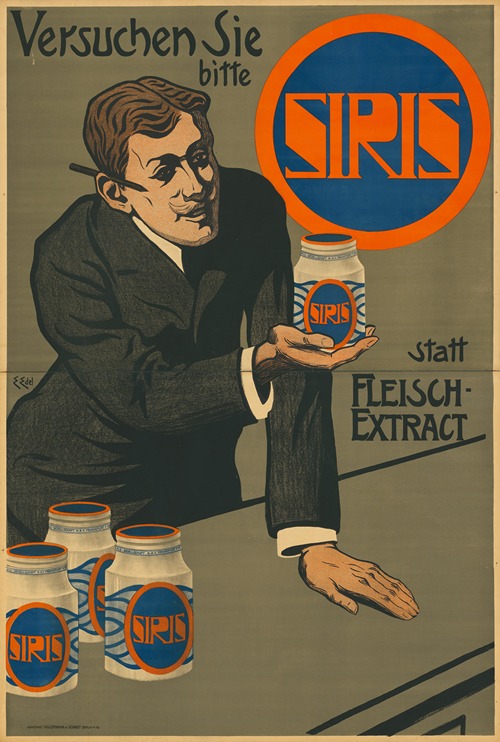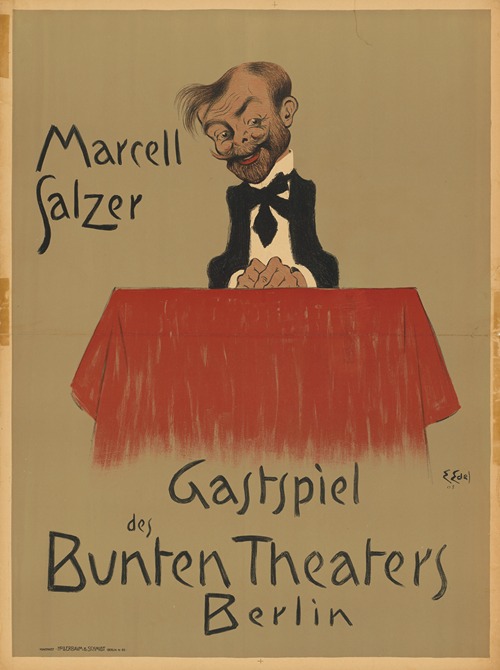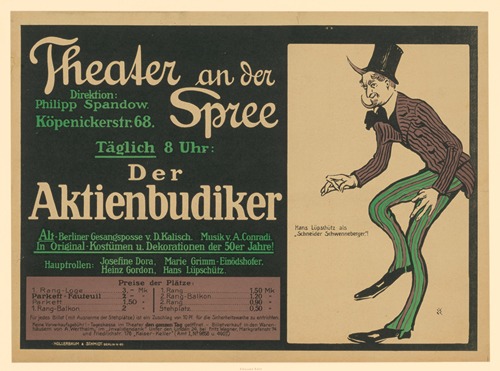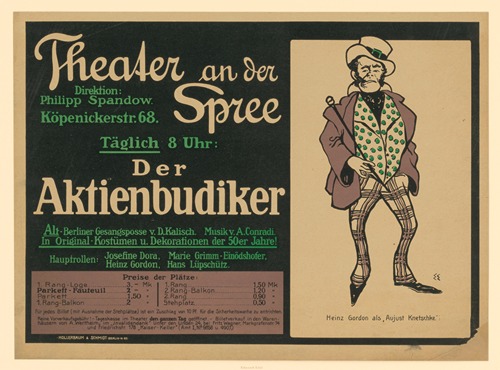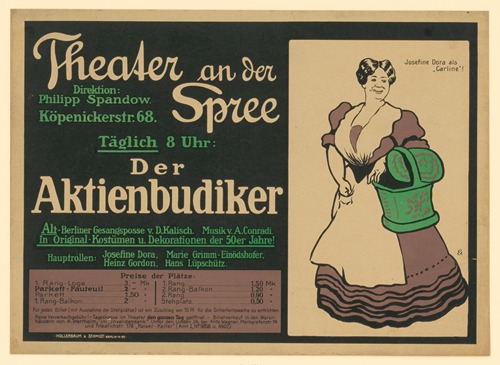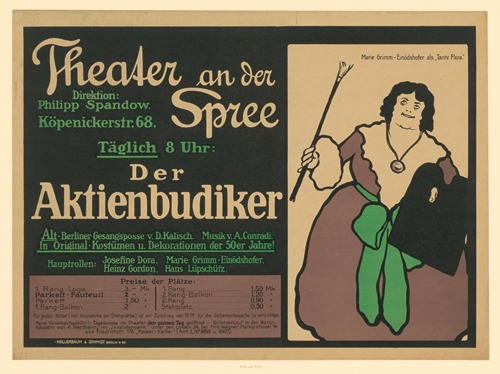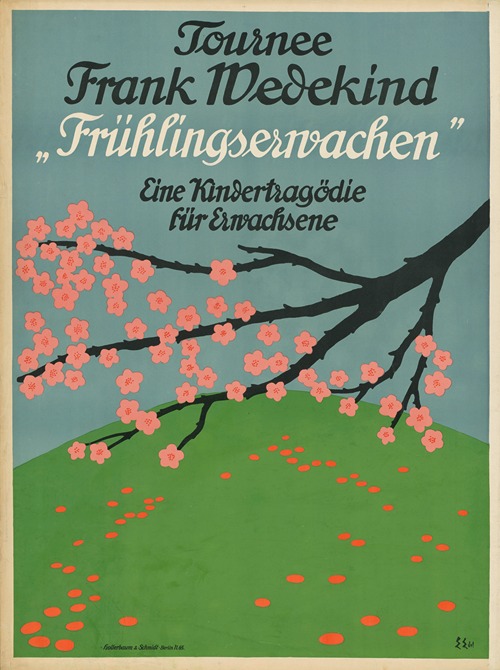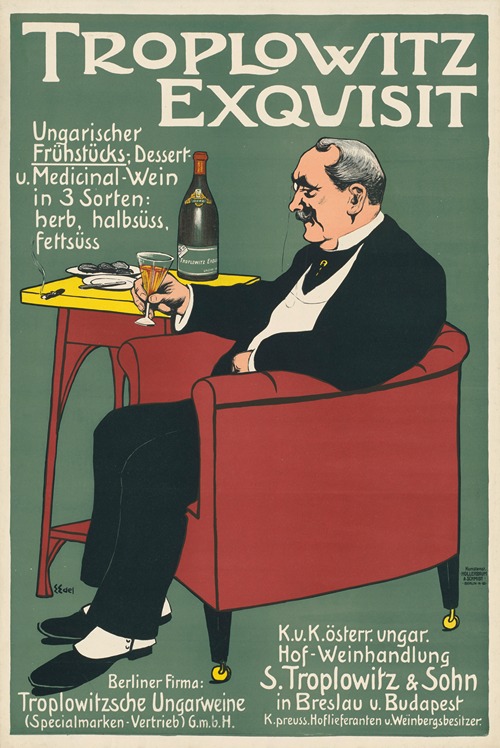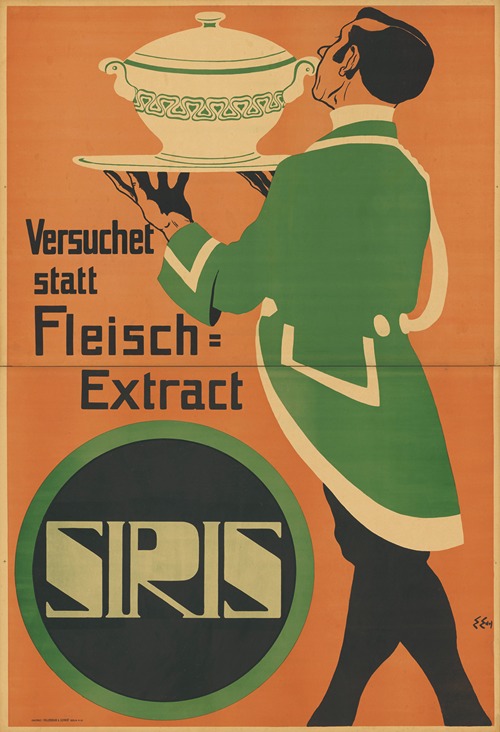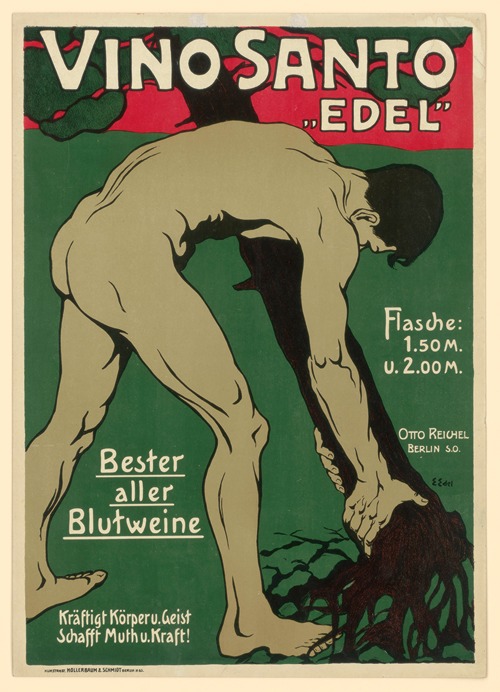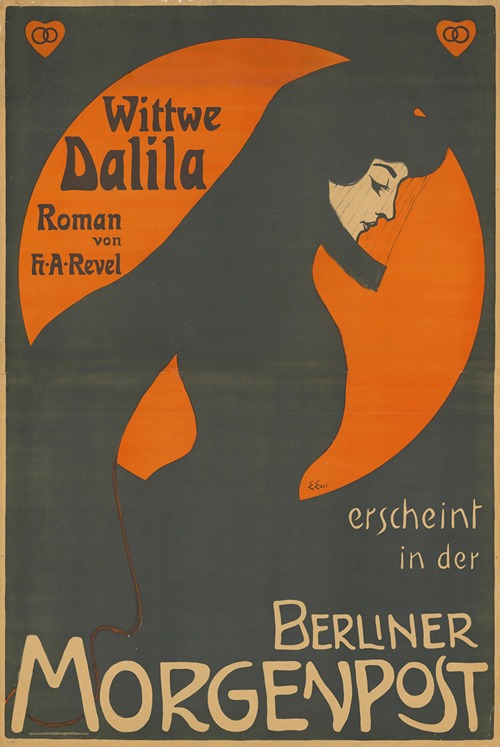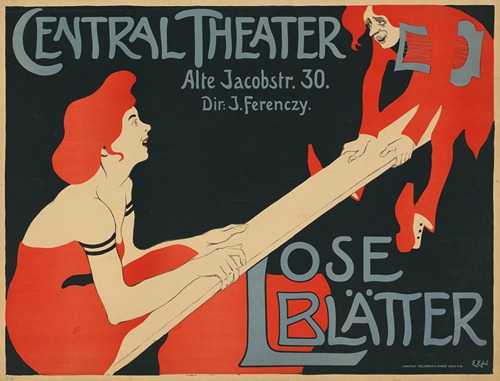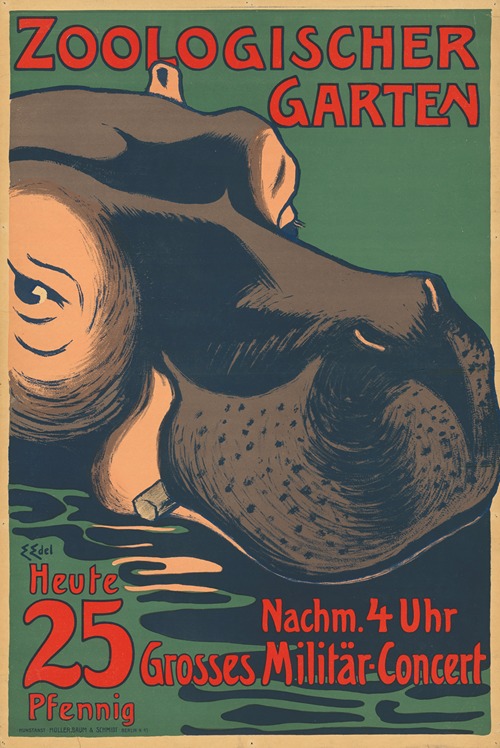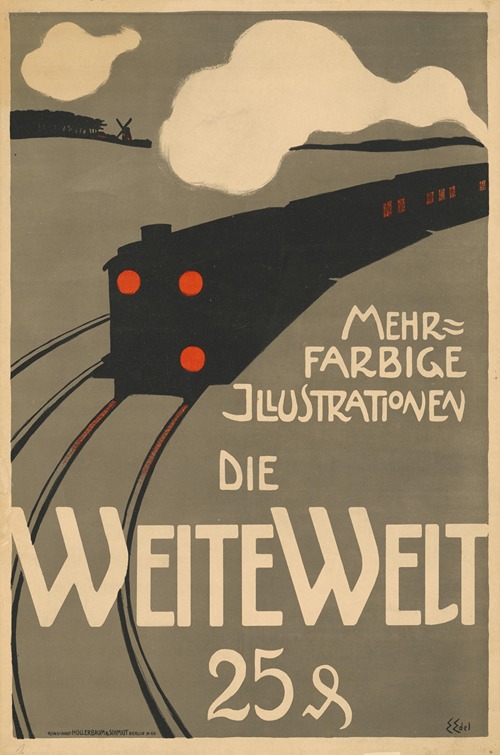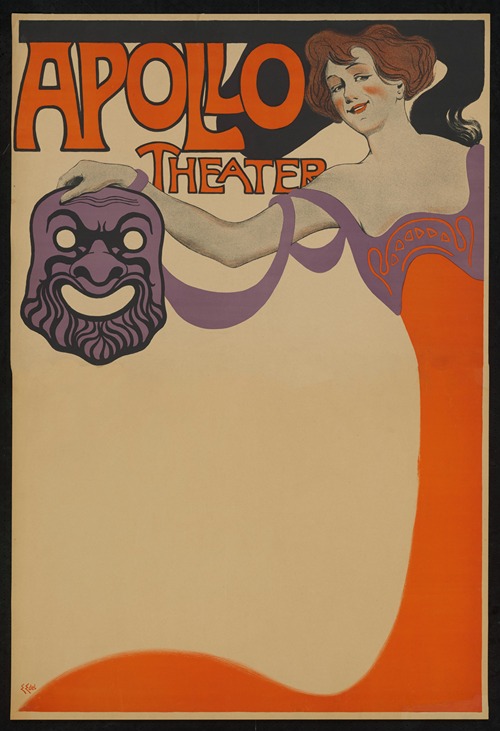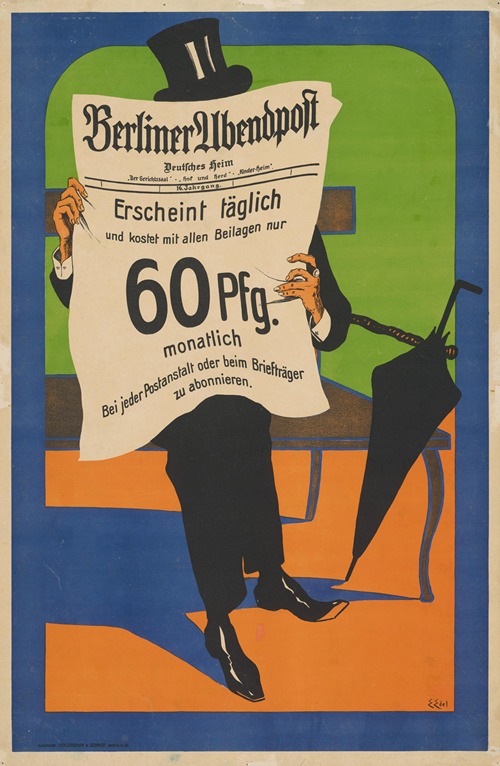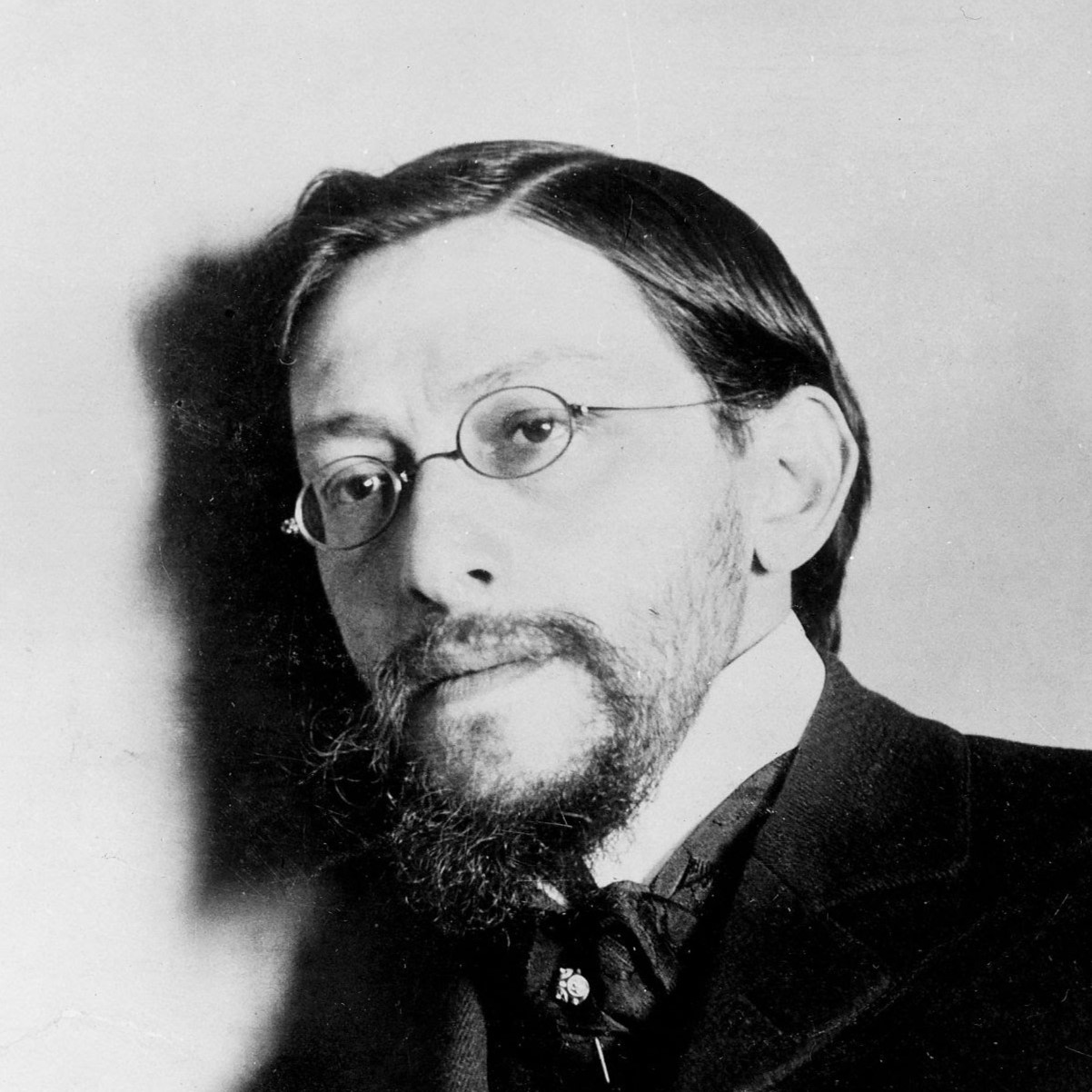

Edmund Edel
Edmund Albert Edel was a German caricaturist, illustrator, writer and film director. His grandson was the Berlin writer Peter Edel (1921-1983).
Edmund Edel came from a Jewish family of physicians who moved to Charlottenburg in 1864. In 1869, his father, Karl Edel, founded the “Asylum for the Mentally Ill” there, a private psychiatric clinic. Edmund Edel attended the Kaiserin-Augusta-Gymnasium in Charlottenburg and then began an apprenticeship in commerce. To continue his commercial training, he went to Paris, where he decided to become an artist. At the end of 1886, he went to Munich to study at the private painting school of Simon Hollósy and then at the Royal Academy of Painting under Nikolaus Gysis and Gabriel von Hackl. He completed his studies in 1891 after the usual two-year stay in Paris at the Académie Julian. In Paris, he had become acquainted with the new poster style that had emerged in France and was brought to maturity by Jules Chéret and Toulouse-Lautrec, with Henri de Toulouse-Lautrec, who was a year younger than him. In view of the artistic possibilities that opened up for him in this field, Edel completed a one-year apprenticeship as a lithographer at the O. de Rycker printing company in Brussels in 1891.
His first paintings in the style of Edvard Munch, which he presented from 1890, were savaged by critics and dismissed as “phantasmagorias”. Edel returned to Berlin in 1892 and was forced to accept commissions for illustrations.
His breakthrough came with his illustrations: in 1896, the satirical magazines Ulk and Fliegende Blätter printed his graphics. He also made a name for himself as a commercial artist. His main clients included theaters, art associations, cabarets and, in particular, the Ullstein publishing house. He created a series of posters for their Berliner Morgenpost. However, his posters also advertised consumer products, ranging from liqueur to car tires and meat extract, and even a shoe polish brand called “Eulen-Wichse” (owl's cum), for which he and a cabaret friend developed the catchy advertising slogan “with the help of a necessary amount of alcohol”, which was repeated by the whole of Berlin: “Womit ick mir die Stiebeln wichse?” (How do I jerk off with my boots on? I jerk off with Eulen-Wichse wichse...) His posters were praised as modern, particularly eye-catching and ingeniously composed. In 1906, the art historian Eduard Fuchs called him ‘Germany's most skilled commercial artist.’ Today he is considered one of the pioneers of German advertising art.
He worked as a costume designer for Ernst von Wolzogens cabaret Überbrettl, designing costumes “in which he parodied the bad habits of contemporary women's fashion and the exaggerations of the modern arts and crafts style with his own delightful high spirits”. French-style cabaret performances were fashionable; because of possible legal consequences, satirical statements were not conveyed in texts, but through costumes and the musical and scenic design.
In 1898, he was co-founder and artistic director of Max Osborn's magazine Narrenschiff (Ship of Fools), a short-lived competitor to Simplicissimus. Joint book productions with drawings and caricatures followed. From 1901 he worked for the satirical magazine Der Wahre Jacob. In his caricatures, he tried to provide an accurate typification of social classes and not just exaggerate individual physiognomic features. Edel's drawn observations of posture, facial expressions, etc. give his caricatures a socio-psychological documentary relevance.
Around 1903, Edel withdrew from commercial art and began writing. He wrote over 30 social novels and many feature articles, earning him the reputation of a chronicler of Berlin bohemia. His novels, which essayistically described Berlin's social milieus, sometimes achieved very high print runs.
Between 1916 and 1919, Edmund Edel directed more than half a dozen silent films and wrote screenplays as a “kinometer poet”, as the screenwriters called themselves because of their productions, which were calculated “by meters and kilometers”. In total, he worked on over 40 films and counted himself among the first German “film snobs”. His most outstanding film is considered to be the drama Die Börsenkönigin (The Queen of the Stock Exchange, 1916), starring Asta Nielsen as the mistress of a mine director. He cheats on her, whereupon she takes over the management of the company. The location in the industrial landscape of the mining industry was unusual.
On his 70th birthday in 1933, the popular and well-known Edel had to endure being called a “salon Semite” in the Völkischer Beobachter; the “obscene and decadent drawing and writing of the noble Jew” did not deserve to be thought about.
A few months later, in early May 1934, Edmund Edel died in Berlin. He was buried in the interdenominational cemetery Heerstraße in the district of Charlottenburg in today's Berlin-Westend.
